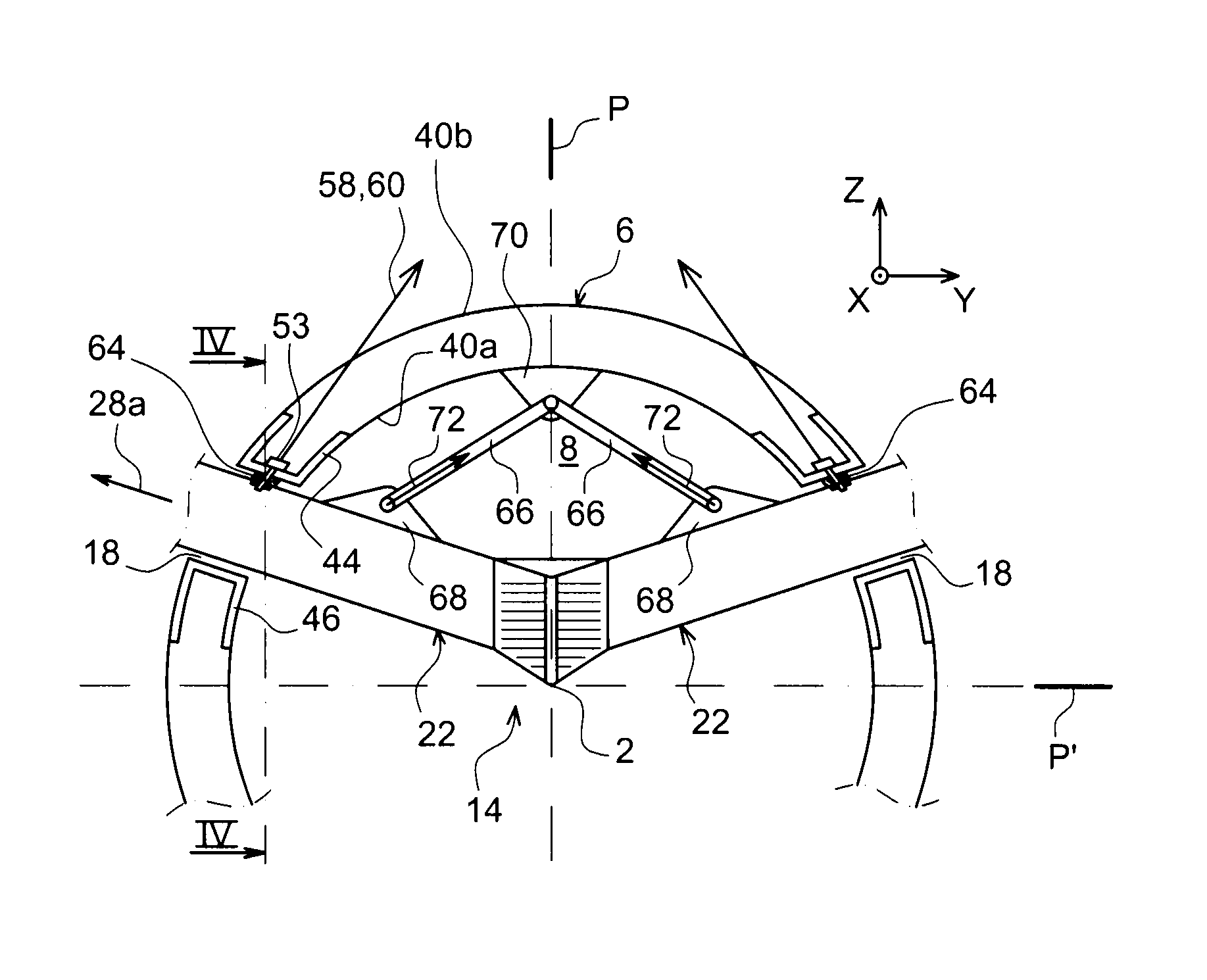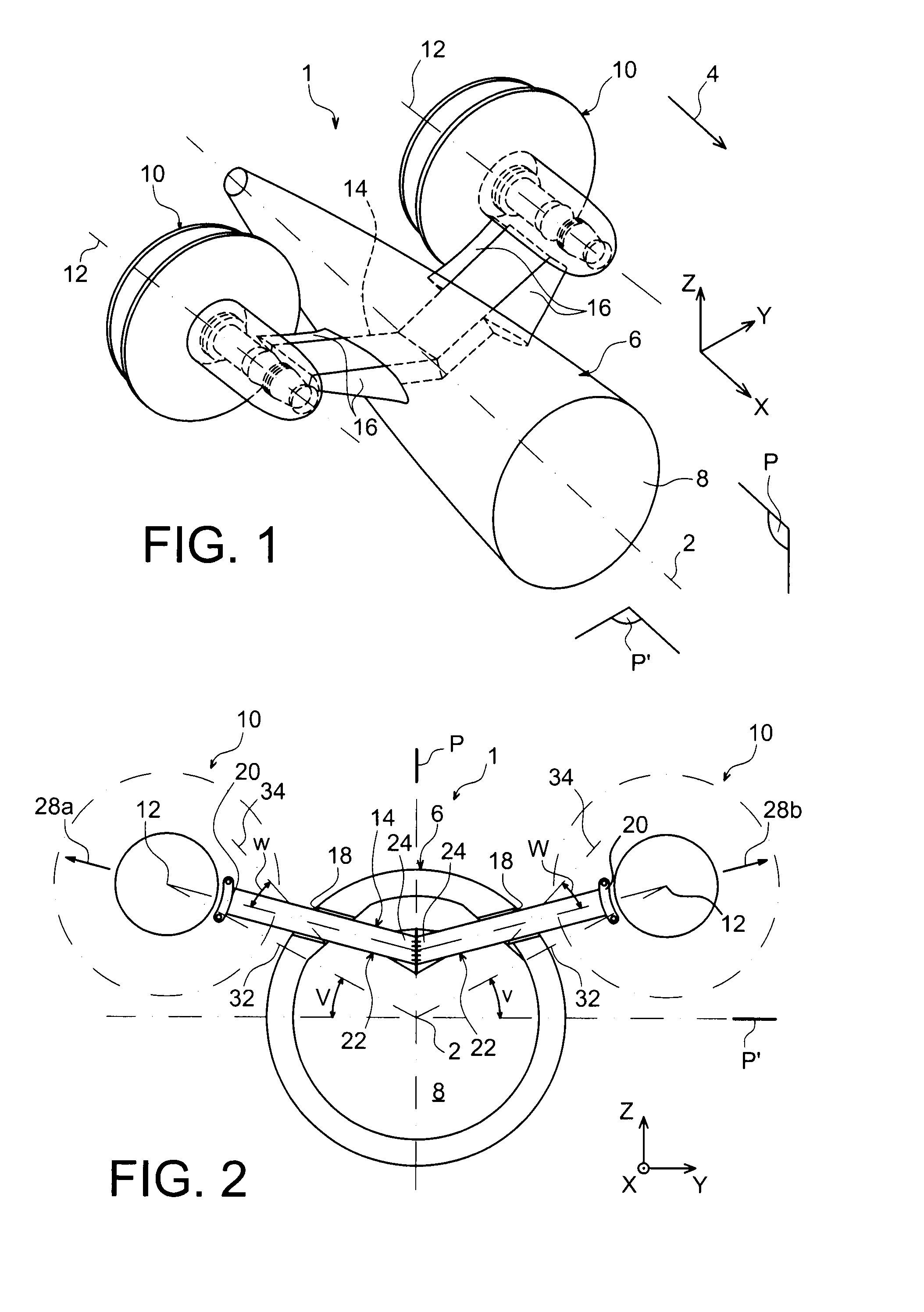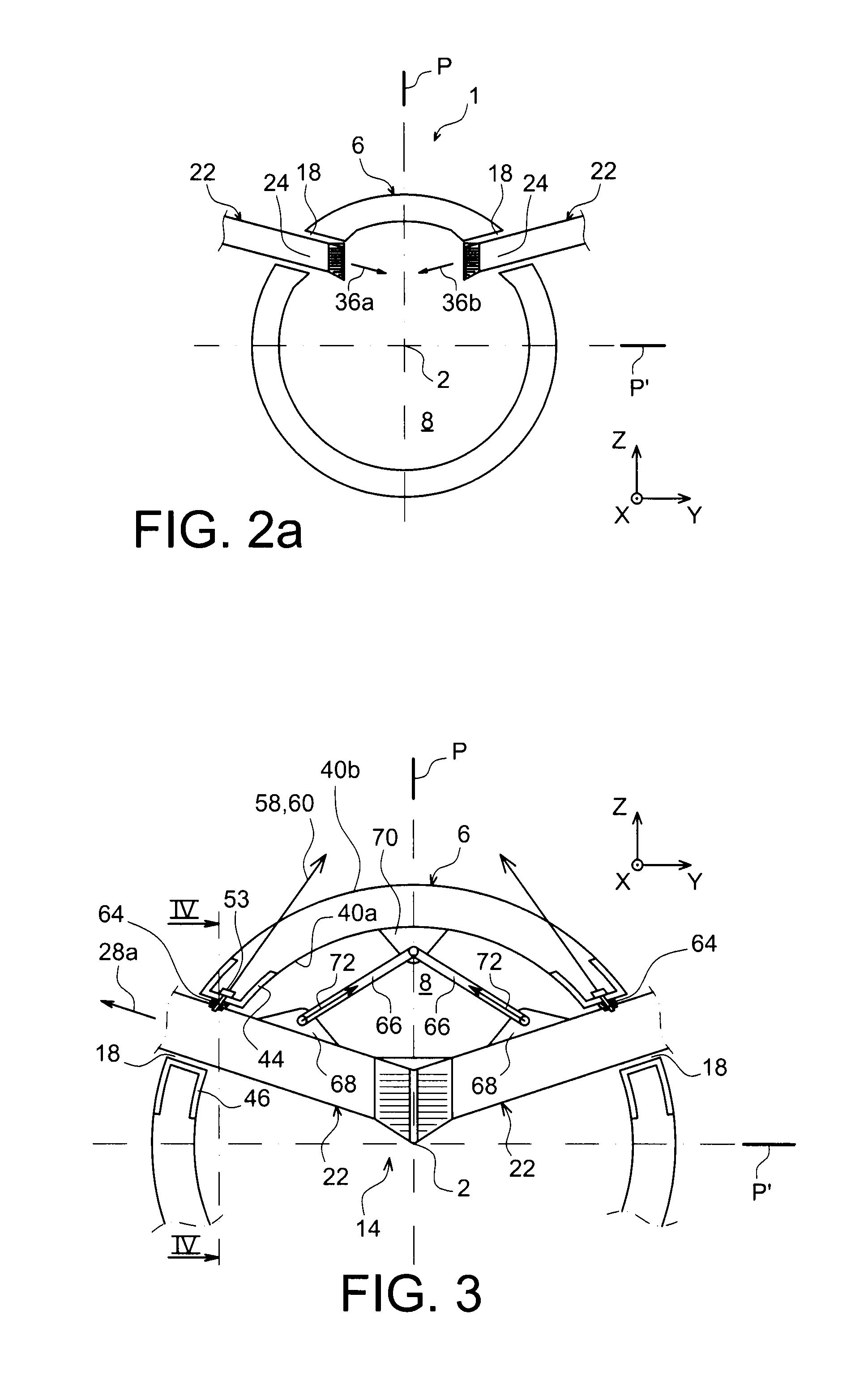Rear part of an aircraft comprising a structure for supporting engines, extending through the fuselage and connected thereto by at least one connecting rod
- Summary
- Abstract
- Description
- Claims
- Application Information
AI Technical Summary
Benefits of technology
Problems solved by technology
Method used
Image
Examples
second embodiment
[0096]FIGS. 6 to 8 show another preferred embodiment in which each of the first and second fastening means assumes the form of a second embodiment, the effort recovery connecting rods 66 being kept here.
[0097]Indeed, the first fastening means, which will be the only ones described since they are identical and symmetrical to the second fastening means, now comprise a hinge-type connection between the rear face 52′ of the half-structure 22 and the rear face 42′ of the casing. To that end, an axis 80 parallel to the direction 28a connects a yoke 82 and a fitting 84 respectively integral with opposite faces 42′, 52′, or vice versa. Preferably, the other faces of the half-structure 22 and the casing 50 are still without connecting means, but are still opposite in pairs.
[0098]The connection obtained ensures the recovery of the efforts along the direction orthogonal to the direction 28a, in a plane YZ, as diagrammed by arrow 86, as well as the recovery of efforts along the direction orthog...
third embodiment
[0099]FIGS. 9 and 10 show another preferred embodiment in which each of the first and second fastening means assumes the form of a third embodiment, the effort recovery connecting rods 66 here also being kept.
[0100]The first and second fastening means having a substantially identical design, and being symmetrical relative to the plane P, only the first means will be described below.
[0101]In this third embodiment, the first fastening means first comprise at least one blocking element of the support structure, under compression loading while bearing on one hand on the first casing 50, and on the other hand of the support half-structure 22. In this configuration, the first fastening means are at least partially formed using blocking elements that work in compression, and no longer in traction as was the case in the traditional elements of the prior art, of the bolt type or a similar type. This results in an ease of placement of these blocking elements, because the latter can be situate...
PUM
 Login to View More
Login to View More Abstract
Description
Claims
Application Information
 Login to View More
Login to View More - R&D
- Intellectual Property
- Life Sciences
- Materials
- Tech Scout
- Unparalleled Data Quality
- Higher Quality Content
- 60% Fewer Hallucinations
Browse by: Latest US Patents, China's latest patents, Technical Efficacy Thesaurus, Application Domain, Technology Topic, Popular Technical Reports.
© 2025 PatSnap. All rights reserved.Legal|Privacy policy|Modern Slavery Act Transparency Statement|Sitemap|About US| Contact US: help@patsnap.com



